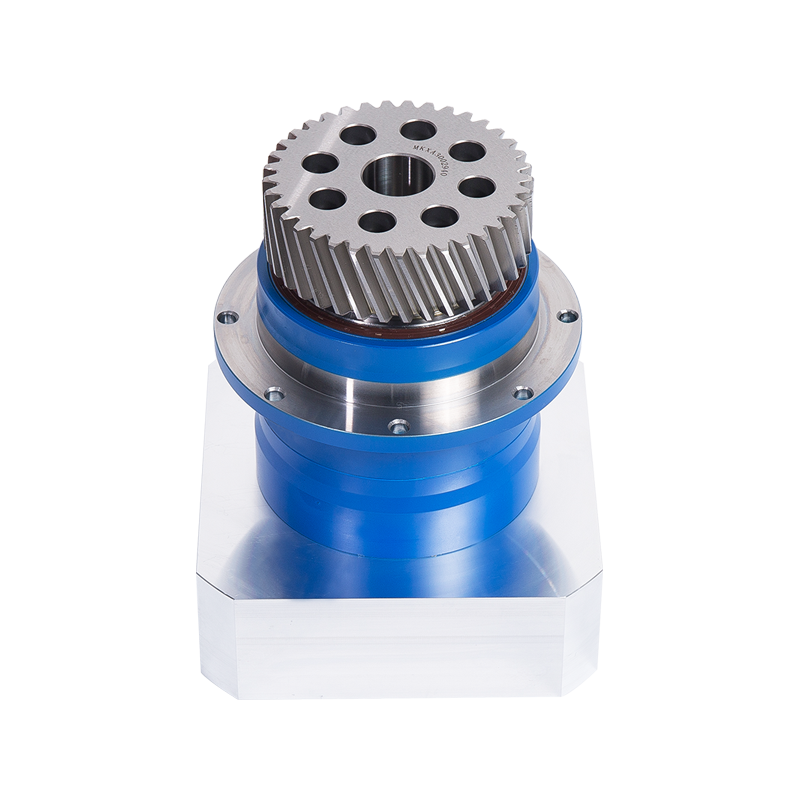Servo Motor MKT Precision Planetary Reducer
Cat:MK series planetary reducer
Meet the needs of customers with high precision requirements for semiconductor devices, automation equipment, machine tools, etc.Applicable to: Door d...
See DetailsIn the world of industrial engineering, performance is everything. Machinery must deliver more torque, more precision, and more durability—all while operating with maximum efficiency. That’s where high speed reduction gearboxes enter the equation. These mechanical powerhouses silently underpin countless operations across manufacturing, mining, transportation, and energy sectors. They convert high speed input into controlled, torque-rich output—enabling complex machinery to function with surgical accuracy and relentless reliability.
Engineering the Art of Controlled Motion
At the core of a high speed reduction gearbox is a deceptively simple principle: velocity traded for torque. By intermeshing gears of different sizes and tooth counts, these gearboxes decelerate input speeds—often from high-RPM motors—to levels that enable downstream equipment to operate with optimal force and precision.
But not all gearboxes are created equal. High speed reduction gearboxes are purpose-built to manage rapid rotational input while minimizing backlash, friction, and energy loss. They’re not merely mechanical intermediaries; they are refined instruments of power management.
Where High Speed Meets High Stakes
From turbines in power plants to extruders in plastic manufacturing, industries depend on high speed gear reducers for uninterrupted performance. These systems aren’t just designed to handle the mechanical load—they’re engineered to endure it over tens of thousands of hours without compromising output fidelity.
In aerospace test rigs, where timing is critical and vibration intolerable, a high speed reduction gearbox ensures exacting motion control. In mining, where excavation machines operate in hostile, high-torque environments, the same gearboxes must withstand not only mechanical stress but also extreme environmental wear.
Each application demands customized solutions. Planetary gear sets, helical stages, and bevel configurations are carefully selected based on torque curves, thermal capacity, and efficiency requirements. The result? A gearbox that not only fits the system—it enhances it.

Material Mastery and Design Excellence
What makes a high speed reduction gearbox last? The answer lies in material innovation and precision manufacturing. From carburized alloy steel gears to high strength bearings and synthetic lubrication systems, every component is selected for durability, low thermal expansion, and wear resistance. Tolerances are tight. Finishes are flawless. Even the housing is optimized for thermal dissipation and vibration damping.
Modern gearboxes integrate advanced technologies such as condition monitoring sensors and smart diagnostics. These tools predict maintenance needs before failure occurs, minimizing costly downtimes and extending asset lifespan.
Efficiency Without Compromise
Traditional reducers often lose efficiency to friction, heat, and misalignment. High speed reduction gearboxes, however, are built to defy these inefficiencies. With optimized gear tooth profiles, high-precision alignment, and low-viscosity synthetic lubricants, they offer exceptional mechanical efficiency—often exceeding 95%.
That means more of the motor’s energy is transferred into usable torque. Less is wasted. Systems run cooler, quieter, and more sustainably. For operators, this translates into energy savings, longer service intervals, and improved environmental compliance.
The Competitive Edge
Integrating a high speed reduction gearbox isn’t just about improving performance—it’s about redefining what performance means. It allows businesses to push the limits of throughput without sacrificing control. To demand more from their equipment without paying the price in wear and downtime.
In today’s competitive industrial landscape, that’s not a luxury—it’s a necessity.
In an era driven by precision and productivity, high speed reduction gearboxes are not optional—they are essential. They are the unsung force-multipliers behind automation lines, energy systems, and production facilities across the globe. And in a world where reliability is the currency of success, these gearboxes are a sound investment in mechanical excellence.